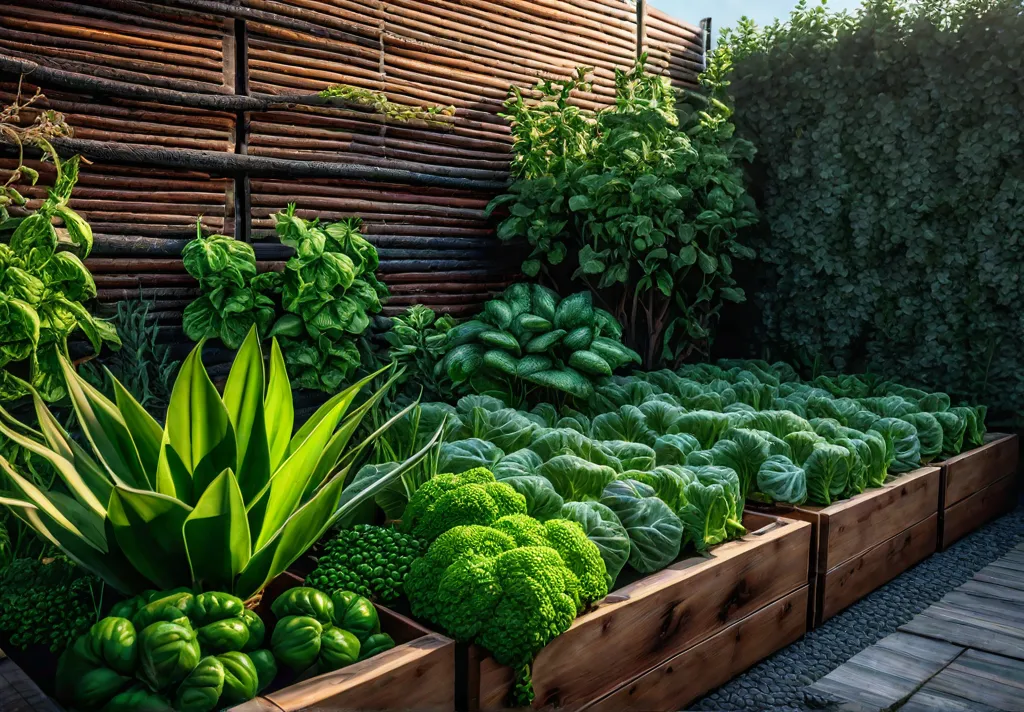Are you dreaming of a thriving vegetable garden but feel limited by your small backyard or urban living situation? You’re not alone! As a Portland-based eco-lifestyle blogger, I’ve faced these challenges and discovered practical solutions to maximize your gardening potential, even in the tightest spaces.
In today’s world, more and more people are turning to urban farming to grow their own fresh, healthy produce. Studies show that up to 30% of the global urban population is engaged in some form of urban agriculture. But the benefits go beyond just fresh food. Urban gardens also help improve air quality, support local ecosystems, and foster a sense of community.
However, cultivating a bountiful vegetable garden in a small or urban setting comes with unique obstacles. From limited sunlight to poor soil quality, the challenges can seem daunting. But fear not! In this article, I will share eight proven techniques to help you optimize your vegetable garden and unlock its full potential, no matter the size of your outdoor space.
Choosing the Right Location
When it comes to small-space gardening, location is key. You’ll want to find a spot that checks all the boxes – ample sunlight, well-draining soil, and easy accessibility. Let’s dive into each of these factors:
Sunlight Exposure: Veggies need at least 6 hours of direct sunlight daily to thrive. Observe your potential garden area throughout the day to assess the sun’s patterns. If your space is a bit shady, consider adding some artificial lighting to supplement.
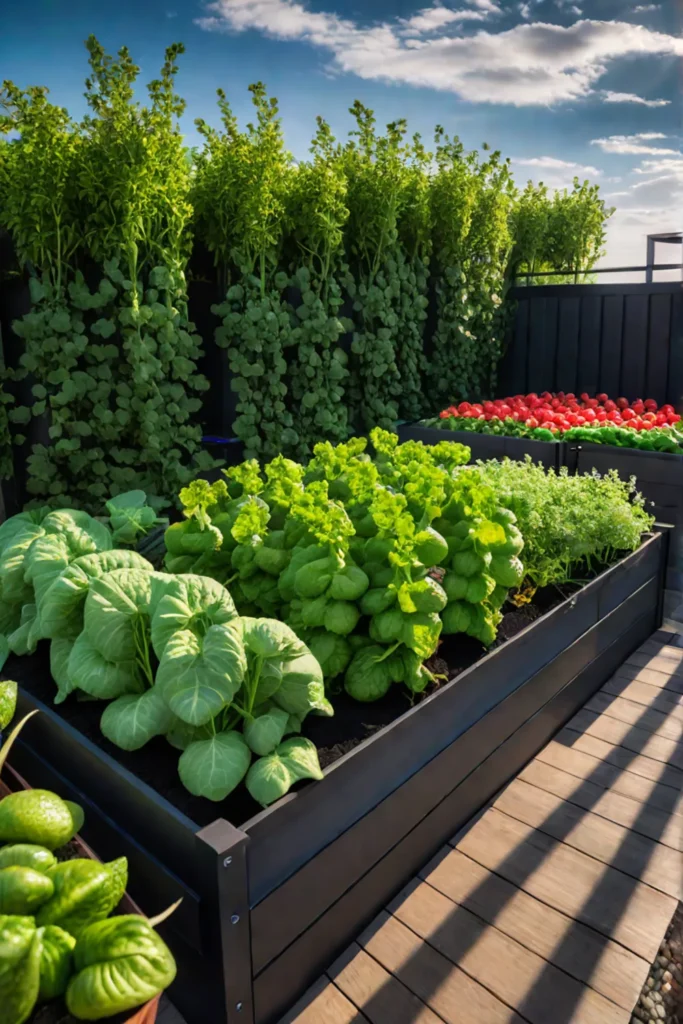
Soil Quality: Healthy soil is the foundation of a successful garden. Test your soil’s pH levels and amend it with compost or other organic matter to ensure it’s rich and well-draining. Raised beds are a great option for urban gardeners with poor soil quality.
Accessibility: Choose a location that’s easy to access and maintain. Vertical gardening techniques, like trellises and hanging baskets, can help maximize your space while keeping everything within reach.
By carefully considering these factors, you’ll be well on your way to creating a thriving vegetable garden, even in the tightest spaces.
Container Gardening
One of the most versatile solutions for small-space gardening is container gardening. Planting your veggies in pots, planters, or other portable containers offers a wealth of advantages:
Space-Saving: Containers allow you to grow various vegetables compactly, making them perfect for balconies, patios, or other small outdoor areas.
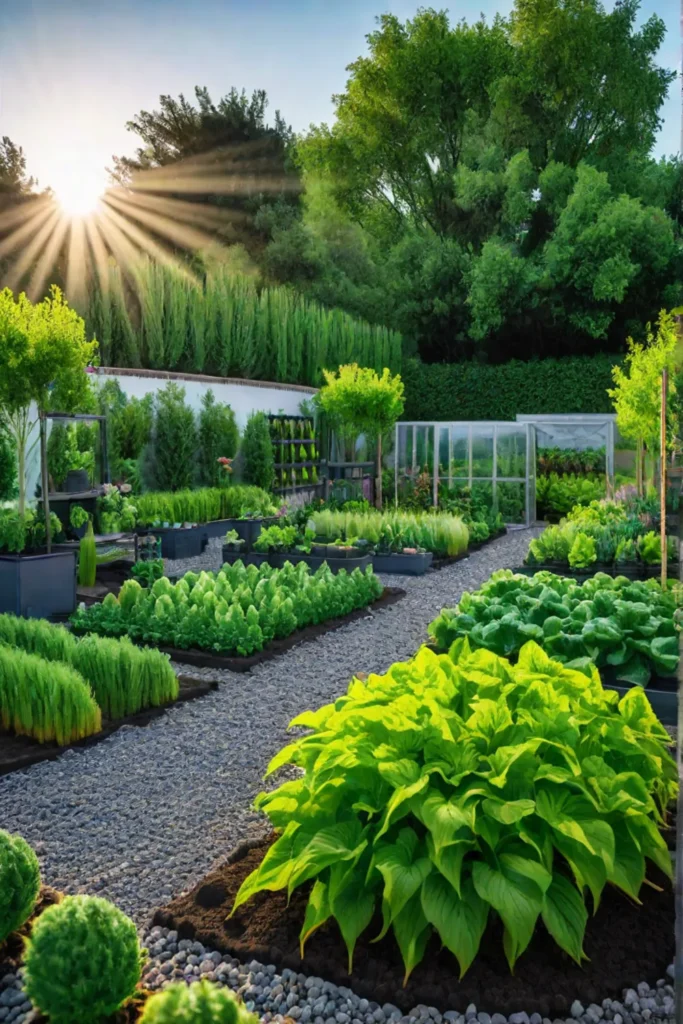
Mobility: Containers can be easily moved around to chase the sun or avoid problem areas, giving you more control over your growing conditions.
Pest and Disease Control: Contained gardens are less susceptible to soil-borne pests and diseases, making for a cleaner, healthier growing environment.
Regarding container selection, look for durable materials like ceramic, metal, or plastic that can withstand the elements. Be sure to choose a container with proper drainage holes to prevent waterlogging. Don’t forget to pick compact, high-yielding vegetable varieties well-suited for container growing, such as cherry tomatoes, bush beans, and dwarf eggplants.
Vertical Gardening
If you’re really short on horizontal space, consider making your garden vertical! Vertical gardening techniques allow you to maximize your growing area by utilizing the often-overlooked vertical dimension.

Green Facades: Train climbing vines or other trailing plants to cover a trellis or wire frame, creating a living, green wall that adds beauty and functionality to your outdoor space.
Living Walls: These modular planter systems attach directly to a wall or fence, enabling you to grow a variety of plants in a compact, vertical footprint.
Hanging Baskets: Suspend planters from above to grow trailing crops like strawberries or cascading flowers, freeing up valuable ground space.
While vertical gardening offers excellent space-saving benefits, it comes with unique challenges. Ensuring adequate sunlight and consistent watering can be trickier in these setups. But with a little creativity and the right plant selection, you can overcome these obstacles and enjoy a bountiful harvest, even in the smallest urban gardens.
Succession Planting
One key to getting the most out of your limited garden space is succession planting. This technique involves strategically timing your plantings to ensure a continuous harvest throughout the growing season.

The idea is simple: rather than planting everything at once, you’ll stagger your crops, allowing you to maximize your garden’s productivity. For example, you might grow an early crop of lettuce, followed by a later crop of tomatoes, and then finish the season with a cool-weather vegetable like kale.
By carefully planning your succession planting schedule, you can avoid overloading your garden and ensure a steady supply of fresh produce. It’s a smart way to make the most of every square inch of your small-space vegetable plot.
Intercropping and Companion Planting
Another powerful technique for optimizing your urban garden is intercropping and companion planting. These methods involve growing multiple crops in the same space, leveraging the natural synergies between different plants.
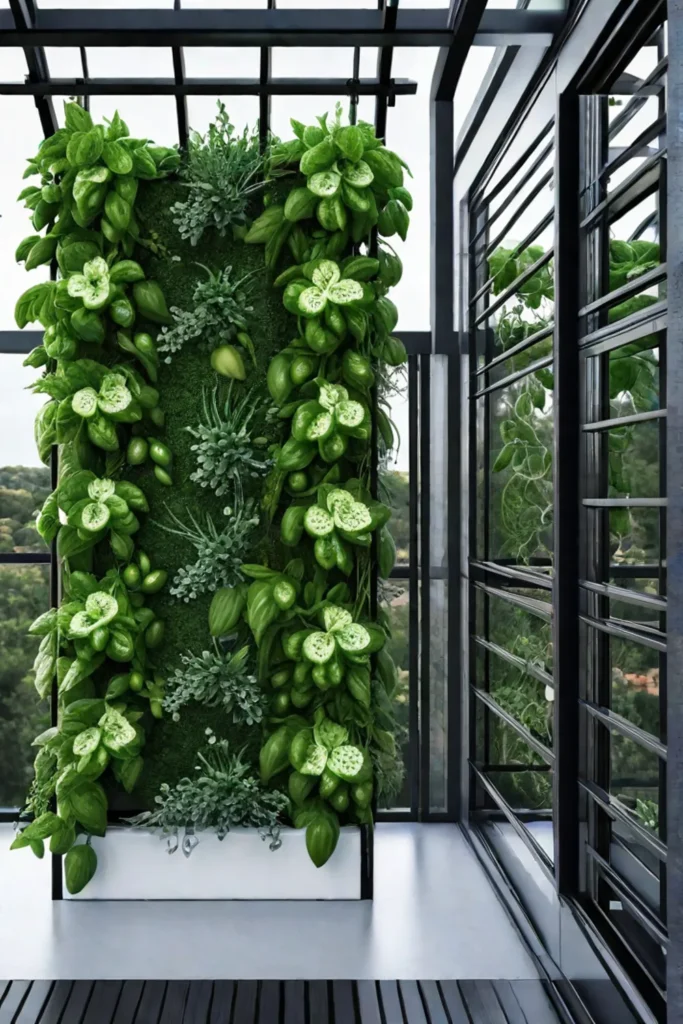
Intercropping involves planting two or more crops simultaneously to maximize space utilization and resource sharing. For instance, you might grow fast-maturing radishes between rows of slower-growing carrots.
Companion Planting: This is a specific type of intercropping where certain plants are deliberately paired to provide mutual benefits, such as pest control or improved soil fertility. A classic example is the “Three Sisters” method, where corn, beans, and squash are grown together.
By strategically combining compatible plants, you can boost your garden’s overall productivity, reduce pest and weed problems, and create a more diverse, resilient ecosystem. It’s a win-win for small-space gardeners!
Using Raised Beds
If you’re dealing with poor soil quality or drainage issues, raised beds can be a game-changer for your urban vegetable garden. These elevated planting areas offer a host of benefits:
Improved Drainage: The raised design helps prevent waterlogging and promotes healthier root growth.

Increased Soil Fertility: You can fill raised beds with nutrient-rich, custom-blended soil mixes tailored to your plant’s needs.
Reduced Soil Compaction: Raised beds help maintain optimal growing conditions because there is no need to walk on the soil.
When building your raised beds, consider size, location, and construction materials. Aim for 6 to 8 inches high, 3 to 6 feet wide, and 6 to 8 feet long. Use durable, garden-friendly materials like untreated wood or masonry in a sunny spot.
Raised beds require a bit more maintenance in terms of watering and fertilization, but the payoffs in terms of yield and ease of gardening make them a fantastic choice for small-space urban growers.
Selecting Compact Varieties
When working with limited garden space, it is crucial to choose vegetable varieties specifically bred for compact growth habits. These space-saving cultivars allow you to maximize your planting area without sacrificing productivity.
Look for determinate or “bush” tomato varieties, such as ‘Tiny Tim’ or ‘Patio,’ that remain relatively small but produce abundant fruit. Compact pepper types like ‘California Wonder’ and ‘Fooled You’ are also excellent options for container gardens or raised beds.
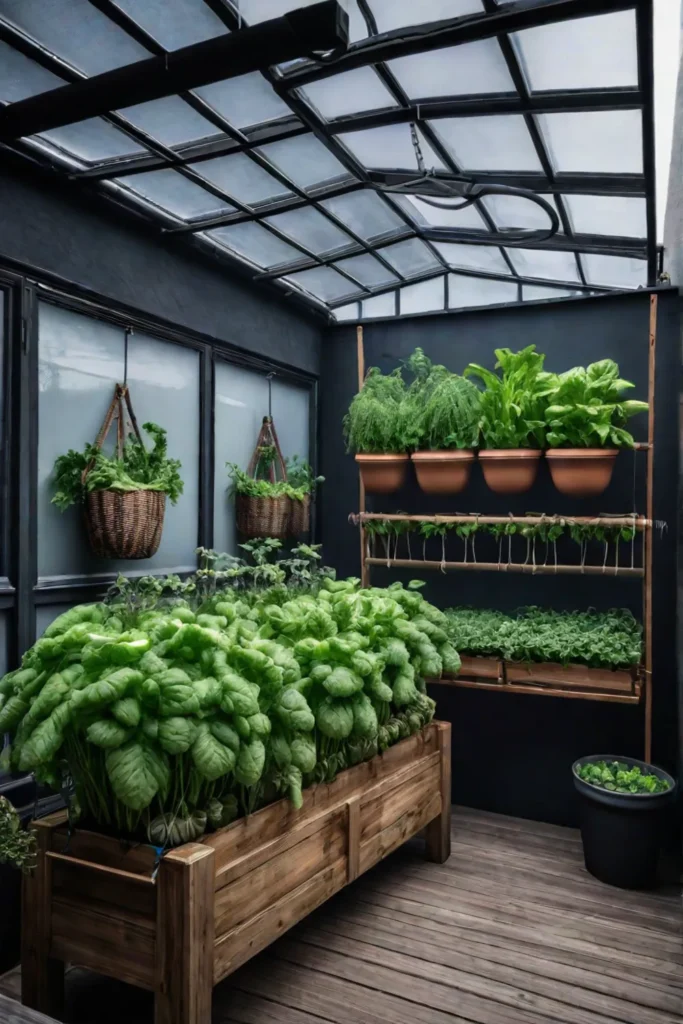
Other compact veggies include ‘Salad Bush’ cucumbers, ‘Aspabroc’ broccolini, and ‘Pixie’ Chinese cabbage. You can enjoy a bountiful harvest without feeling cramped by selecting the right varieties for your small-space garden.
Conclusion
As an eco-conscious lifestyle blogger, I’m passionate about helping urban dwellers and small-space gardeners unlock the full potential of their vegetable gardens. By implementing the eight techniques we’ve explored—from strategic location selection to compact variety selection —you can transform even the tiniest outdoor spaces into thriving oases of fresh, nutrient-dense produce.
Remember, maximizing every inch of available real estate is key to success in small-space gardening. Experiment with vertical growing, succession planting, and companion cropping to boost your yields. And don’t be afraid to get creative with raised beds, containers, and compact vegetable varieties to tailor your garden to your unique growing conditions.
With some planning and the right strategies, you can enjoy the countless benefits of urban agriculture, from improved food security to enhanced community engagement. So, what are you waiting for? Get out there and start optimizing your small-space vegetable garden today!
I’d love to hear about your urban gardening successes and challenges. Share your stories in the comments below – I’m always eager to learn from fellow green-thumbed enthusiasts like yourself. Happy gardening!
